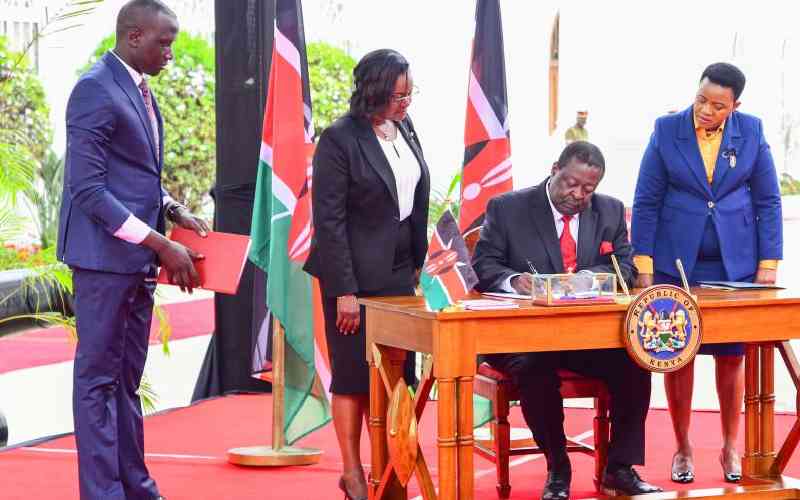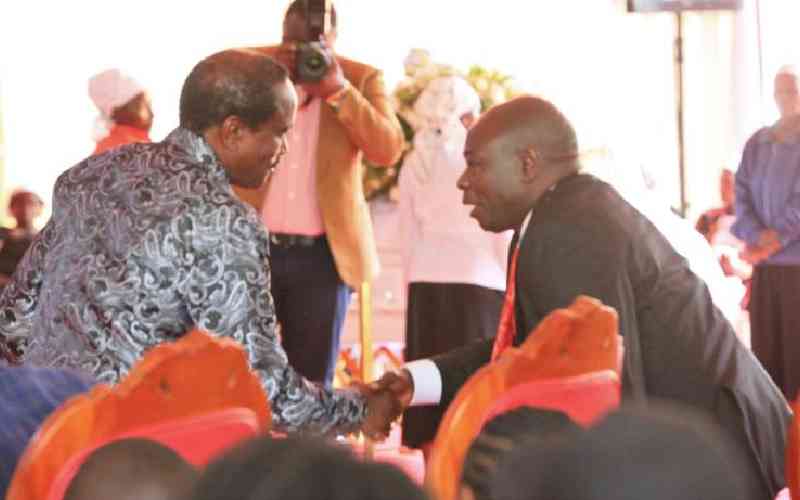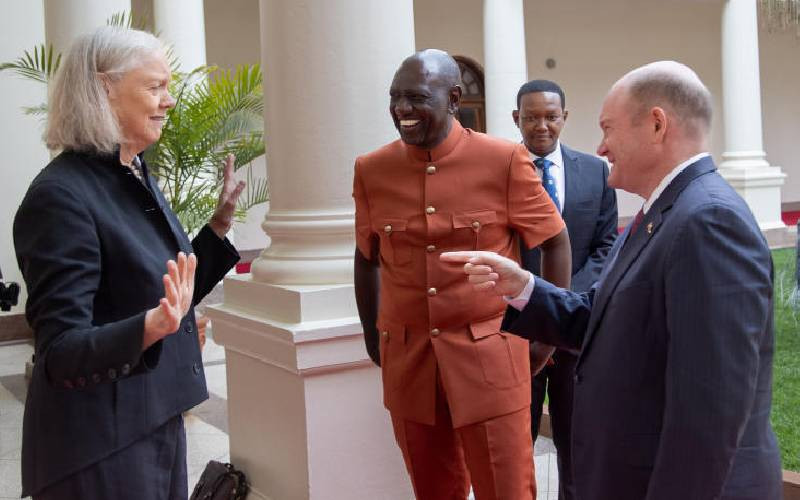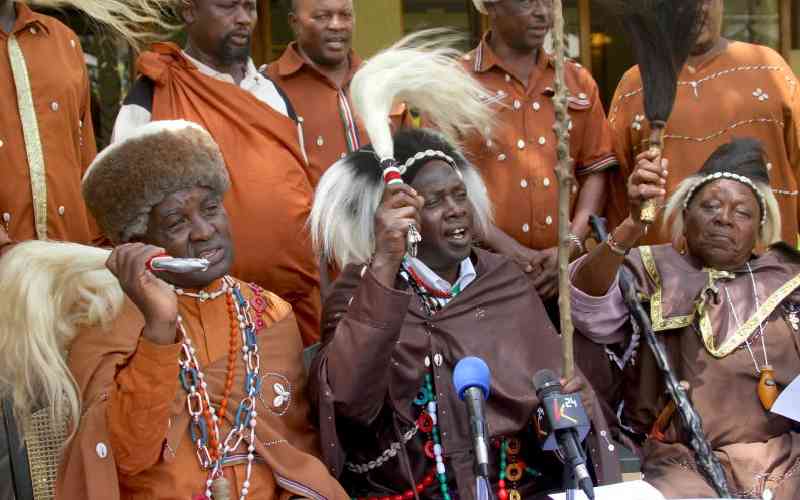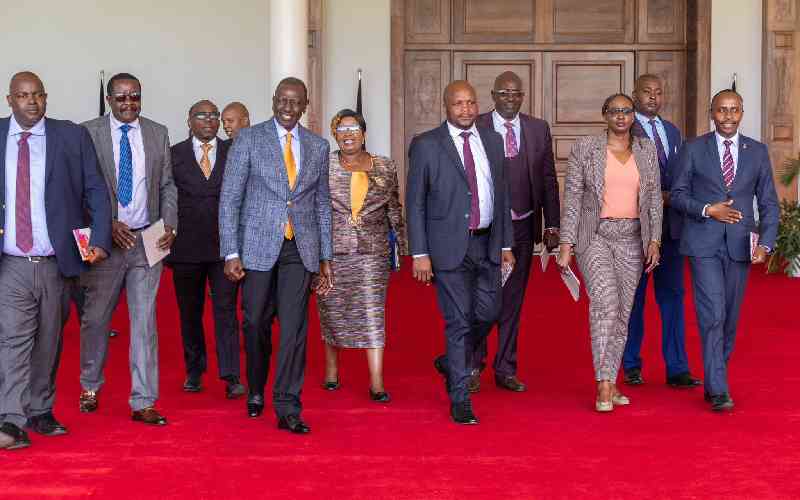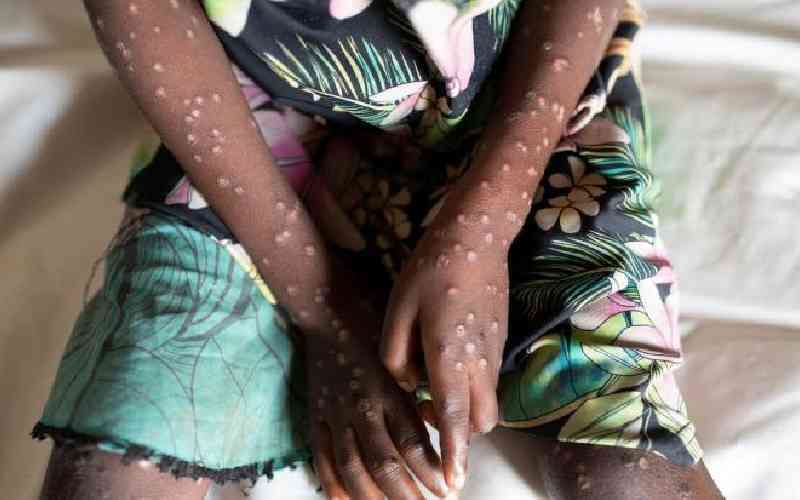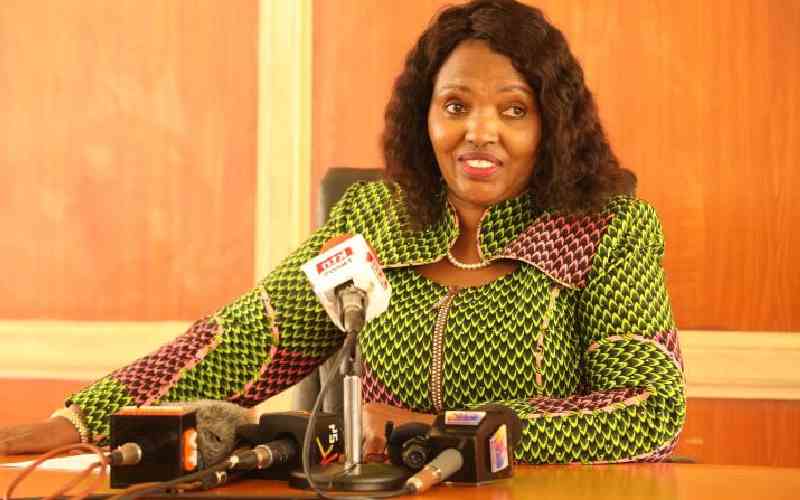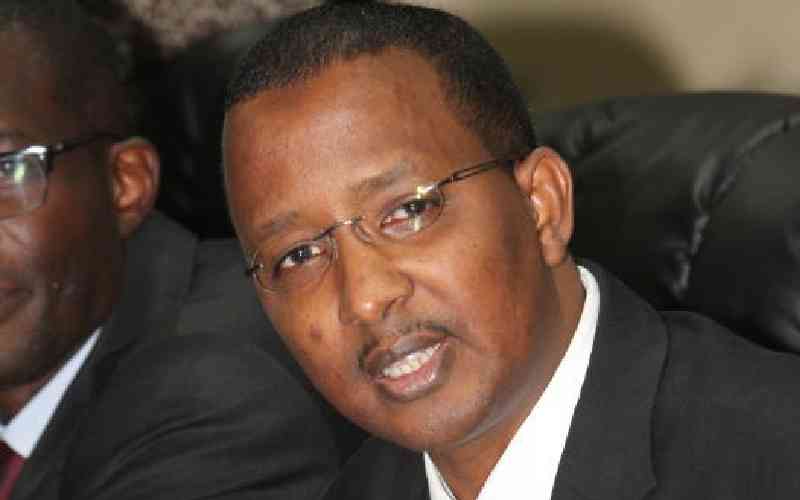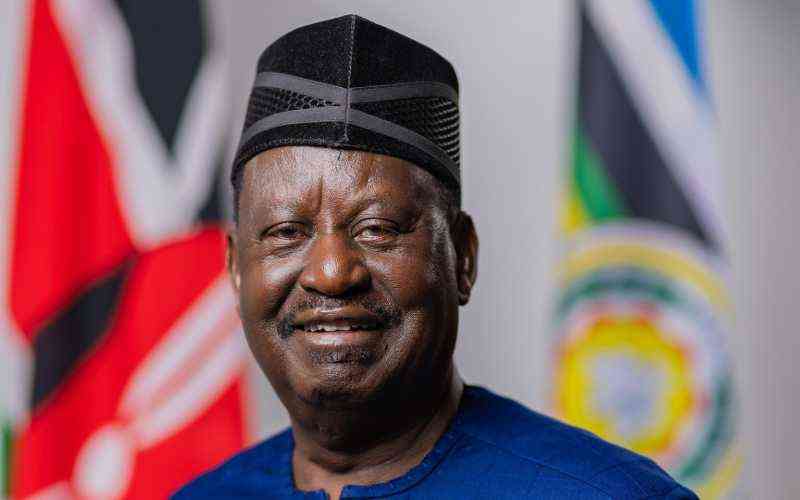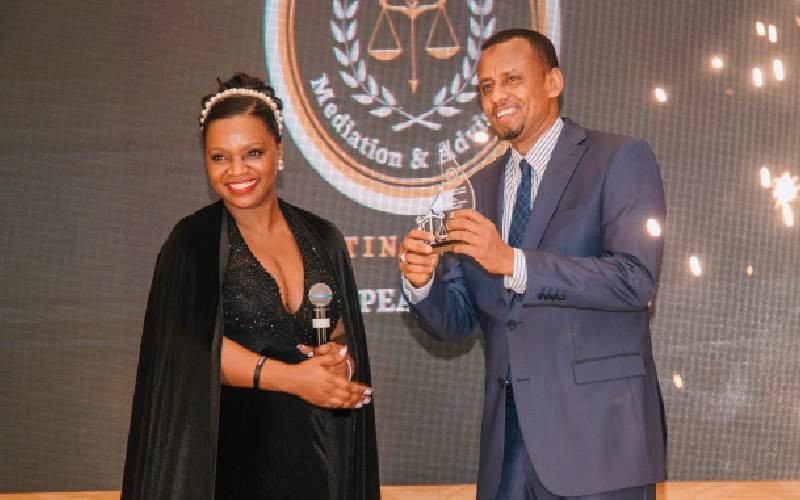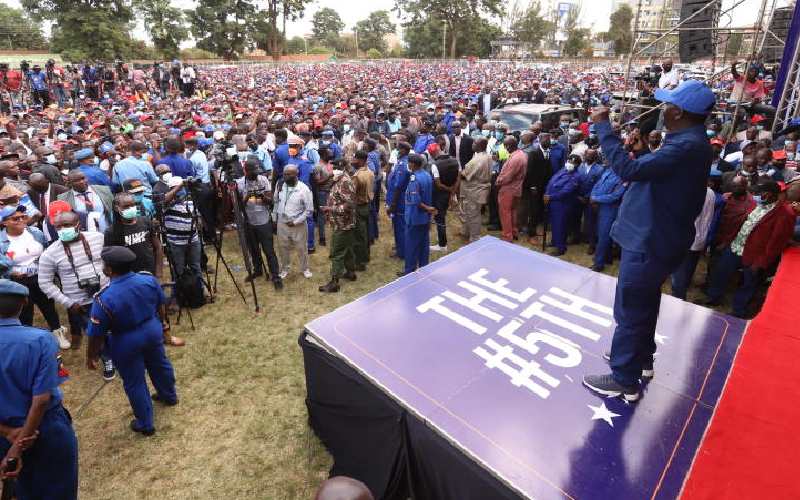
ODM leader Raila Odinga addresses a gathering at Thika Green Stadium in Kiambu on January 15, 2022, during a rally to popularise Azimio la Umoja. [Denish Ochieng, Standard]
Opposition leader Raila Odinga returned to the venue that announced his entry into the national stage and began his successful assault on the botched push for constitutional change.
And as Raila launched his presidential bid at Thika Stadium, from his vantage point atop the main dais, all he could see was a sea of blue, red and orange, the colours that thousands who thronged the stadium adorned.
The hats that went up the air as he was called to address the gathering must have caught his eye. When he was at the venue in 1995, the view consisted mostly of a cloud of dust left in the wake of people escaping the fracas-hit stadium.
In place of the sounds of gunfire that rocked the stadium at a Ford Kenya rally nearly three decades ago, was a thunderous cheer of “Igwe”, an endorsement of Raila’s fifth presidential bid.
Raila couldn’t have wished for a better resumption of his climb up Mt Kenya; streets lined up with people welcoming his convoy to Thika, who later poured into his rally’s venue; in a region that perennially votes against him bursting at it seems; a show of might in Deputy President William Ruto’s perceived stronghold, declaring it a tsunami.
Most of those present had endured the scorching sun that floated above their heads throughout the day, awaiting the former prime minister who had branched off to meet 1,000 youth leaders at the Mt Kenya University to receive their resolutions.
Raila is keen to challenge Ruto’s alleged influence in the region and the DP formed a significant part of his campaign fodder. “Ruto has failed at his job, (Ruto ameshindwa na kazi)” Raila said, referring to what he described as broken promises of the Jubilee administration.
“I will deliver for Kenyans,” he added, before accusing Ruto of corruption. “I will lock them up at Kamiti prison.”
He promised to revamp Thika into the industrial behemoth it was in yesteryear. He also vowed to revamp the agricultural sector by introducing what he termed “smart agriculture” that he said includes subsidies to farmers.
Equally significant was his promise to carry on with President Uhuru Kenyatta’s projects in Mt Kenya, equating the promise with a favour he owes Uhuru.
“We drew the plans for the Kenol-Marua Road during my tenure as prime minister and Uhuru constructed it. I will complete the Mau Mau road project as president,” Raila told the gathering.
His rapport with Uhuru is a critical piece of Raila’s strategy to warm his way into the hearts of Mt Kenya residents and was apparent in the references made by those who spoke to the pair’s 2018 handshake.
“I am here as your friend. Those who said I cannot climb the mountain have been put to shame,” Raila said before rehashing the hostile circumstances that led to the handshake. “We will put our adverse past with you behind just as you did to shake hands with Uhuru,” said Kiambu Town MP Jude Njomo. Besides his historical ties to Thika Stadium, Raila said his choice of Kiambu County was influenced by the need to foster unity, faulting Ruto’s United Democratic Alliance (UDA) for sowing seeds of discord. “We cannot afford to call each other ‘madoadoa’ so many years after independence. Every Kenyan has a right to live anywhere across the country. No one should divide us,” he said.
The significance of Kiambu was not lost on the host, Kiambu Governor James Nyoro, who termed it a fitting starting point of monumental events. He credited the county as the venue for the last meeting founding President Jomo Kenyatta held before the state of emergency was declared and the birthplace of independence party Kanu.
“You are not in Kiambu by accident... We are starting the journey of your presidency here and we will go together to Kirigiti stadium to celebrate your victory,” said Nyoro, urging his constituents to register as voters in the mass registration exercise that starts tomorrow. More than 10 governors and 20 MPs attended yesterday’s event, a celebration of sorts of the success of the Political Parties (Amendment) Bill at the National Assembly. Popular artistes kept the mood celebratory.
Raila arrived at the stadium at 2.24pm, making his customary lap of honour flanked by Nyoro, waving to the crowds. He left in similar fashion.
Had he lingered longer, when everyone else had left, he would have perhaps seen the patch of brown that extended to all corners of the stadium that replaced the pitch’s green, an indication of the success he had enjoyed, perhaps exceeding the 20,000-attendees target he had set.
 The Standard Group Plc is a multi-media organization with investments in media platforms spanning newspaper print
operations, television, radio broadcasting, digital and online services. The Standard Group is recognized as a
leading multi-media house in Kenya with a key influence in matters of national and international interest.
The Standard Group Plc is a multi-media organization with investments in media platforms spanning newspaper print
operations, television, radio broadcasting, digital and online services. The Standard Group is recognized as a
leading multi-media house in Kenya with a key influence in matters of national and international interest.

